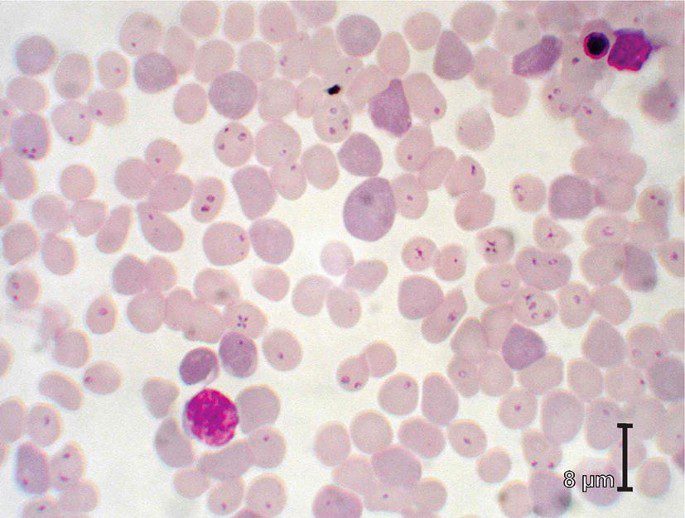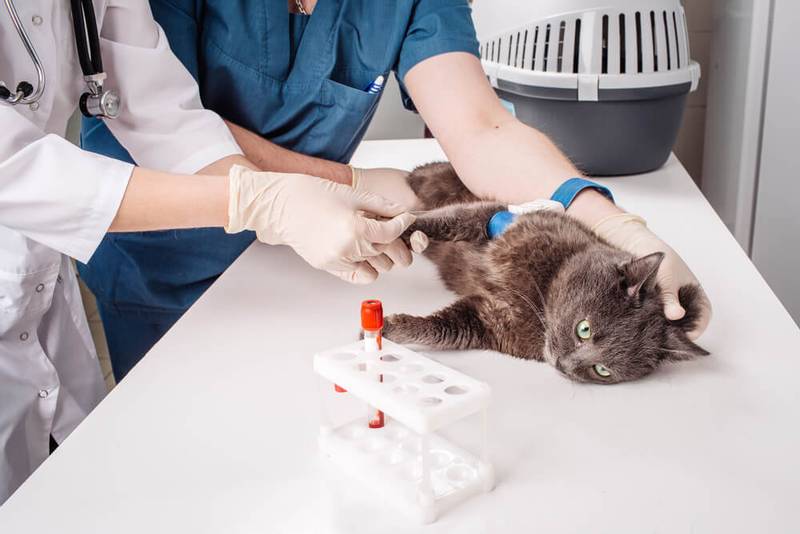
Piroplasmosis in cats

Globally, cases of feline babesiosis have been reported in Europe (France, Germany, Poland, and Spain) and Asia (Israel, India, and Pakistan). Molecular studies have shown that cats can contain many types of Babesia.
Contents
Piroplasmosis in Cats: Essentials
The disease is not typical for Russia;
Feline babesiosis is a serious veterinary problem only in South Africa;
The disease is characterized by a chronic course without periods of high temperature, lethargy and weakness of the pet are usually noted;
The prognosis depends on the severity of the disease, which in turn depends on both host and host factors;
Mortality rates of 15 to 20% have been reported.
Causes of the disease
Babesiosis is a tick-borne protozoan disease caused by parasites of the genus Babesia belonging to Piroplasmida. That is why the disease is known as both babesiosis and piroplasmosis.
Babesia are protozoan unicellular parasites that develop in animal erythrocytes and feed on their contents (hemoglobin). Numerous species of babesia exist throughout the world. Basically, the parasite is species-specific, that is, a certain type of parasite can be dangerous only for a certain type of animal. For example, babesia canis infects dogs, babesia equi infects horses, babesia felis infects cats, etc. However, thanks to the development of science, in particular molecular genetics, it has become known that cats have different types of babesia. Four species of babesia have been found to parasitize cats so far: these are Babesia felis, Babesia cati, Babesia herpailuri and Babesia pantherae.
Babesia felis, first identified in feral cats in Sudan, has subsequently been recognized as the leading cause of clinical disease in domestic cats. Although babesiosis in domestic cats has been periodically reported from various countries, as a serious disease it seems to be clearly limited to South Africa. Moreover, babesiosis of cats is regularly recorded only in coastal regions. It is assumed that the infection is transmitted by a tick, but the carrier has not yet been identified.
Symptoms of piroplasmosis
Piroplasmosis in cats, unlike a similar disease in dogs, is usually not accompanied by an increase in body temperature. Most often, the owners note the pet’s weight loss and lethargy as the only signs. The main symptoms of piroplasmosis include pallor of the mucous membranes, dejected state of animals, in some cases jaundice develops. Often, cats have co-infections (eg, mycoplasmosis, leukemia, immunodeficiency) that can affect the presentation of the disease.
Diagnostics
The gold standard in the diagnosis of piroplasmosis in cats is the detection of parasites in a blood smear from the ear (inclusions are detected in erythrocytes), but the final diagnosis with the definition of the type of parasite is made by PCR analysis of blood (polymerase chain reaction).
Additional diagnostic methods include general and biochemical blood tests.
According to the general blood test, regenerative anemia is usually noted, according to blood biochemistry – an increase in the level of alanine transaminase (but not alkaline phosphatase) and total bilirubin, as well as various electrolyte imbalances. Occasionally, secondary immune-mediated hemolytic anemia may occur.

Treatment of piroplasmosis
Given the rarity of this disease, treatment is currently not fully developed. It is believed that the main drugs effective against other types of Babesia (imidocarb dipropionate, diminazene diaceturate) are ineffective against feline piroplasmosis. The basis of therapy are antiprotozoal drugs and maintenance therapy. Primaquine phosphate is considered the drug of choice for cats. The drug is administered both inside and intramuscularly. Moreover, it is worth noting that primaquine phosphate has a clinical recovery, but the cat often remains a carrier of the disease. Often, repeated administration of the drug or even long-term treatment is required.
Supportive and symptomatic therapy is also used depending on the symptoms of piroplasmosis (intravenous infusion therapy, vitamin preparations, blood transfusion, etc.).
Prevention
Although the carrier of feline babesiosis has not yet been found, it is most likely one of the many types of ticks. Therefore, the main means of prevention include various drops from ticks, as well as collars and sprays – for example, based on fluralaner, fipronil, etc. It is not recommended to use preparations based on plant extracts as protective therapy, since their inefficiency has been proven in practice.

Danger to humans
As previously reported, babesiosis is a species-specific disease and no human cases of feline piroplasmosis have been reported in the literature. Moreover, the main route of transmission of the disease is through the bite of a tick, between animals and between an animal and a person, no transmission routes have been found.
August 4 2021
Updated: August 4, 2021





